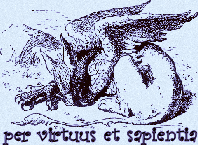I was determined to find more about the family who built my house. The scant information I had wasn’t bearing any good fruit through Google (gasp!) but surely the census would do the trick.
At two-o-clock in the morning I was still wrestling with the buggy census interface, windows crashing left and right. When I did manage to load a page, my attempts to scan for names were stymied by the scrawlingly-illegible handwriting. I envisioned an elderly gentleman balancing his clipboard precariously on his elbow as he hastily jotted down his respondent’s information. Little did he know that seventy years later a sleep-deprived scholar would be appraising his work with an “Aaarg!”

Needless to say, I didn’t learn very much.
If I could design a dream app, it would be something that could clamp on to a geographical location, compile every morsel of information about that site, and generate a logical, elegant timeline of its history, something like Facebook’s version, but for a specific address, or heck, a coordinate.
Just think. What if every existing photograph could be retroactively labeled with a GPS coordinate? What if search engine technology was intelligent enough to divine a reference to a specific location just by the context of words around it?
Let’s say Maggie May Sue wrote in her 1875 journal, “We came to a spot near the Platte, a great swath of grass two miles south of town, and there first laid eyes upon the mountains.” In 2009, an employee at a Colorado archive scans that page and enters it into an online database. My geo-timeline app would catch the word “Platte” and use survey maps to narrow down which “grassy swath” Maggie May was standing in. I could go to that spot (or simply enter the coordinates) and her journal entry would pop up along with any others, plus photographs, maps, and, yes, even census information.
Nirvana for a history buff! I could go on a hike to some remote wilderness lake and, if I could bear turning on any electronic device to begin with, take a look at who else had been there, what incidents had happened, whether a structure ever stood there, and if so, what it looked like.
My reverence for a place increases the more I know about it. It humbles me to think of the generations of people who have stood where I stand. I wonder about the hand that once held the nail in this wall, about the bones that might lay forgotten beneath this soil.
All right, so no amount of technology will ever unearth information that has never been recorded. An iPhone isn’t an archaeologist, after all. Still, with the vast amount of data ever growing online, perhaps my dream app could be a useful thing.
It would’ve rescued me from that darn census, anyway.






No comments:
Post a Comment